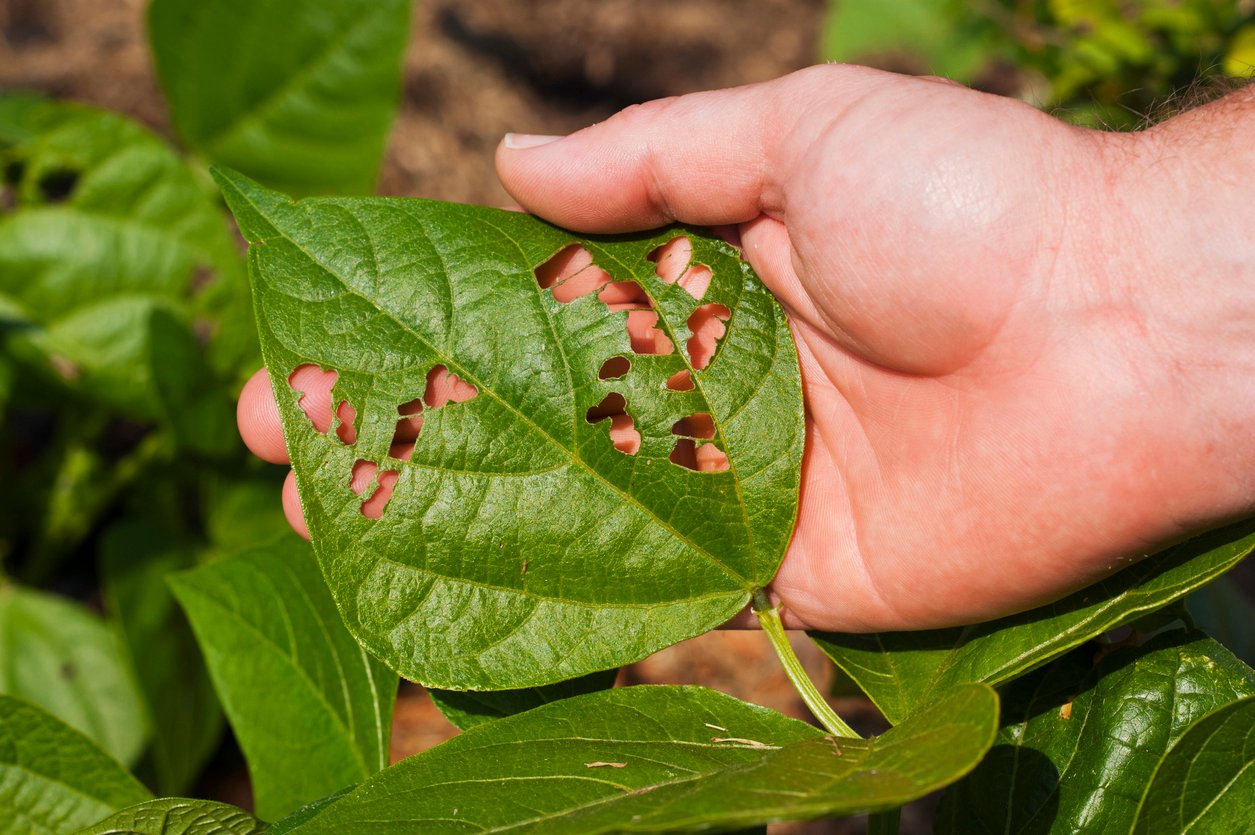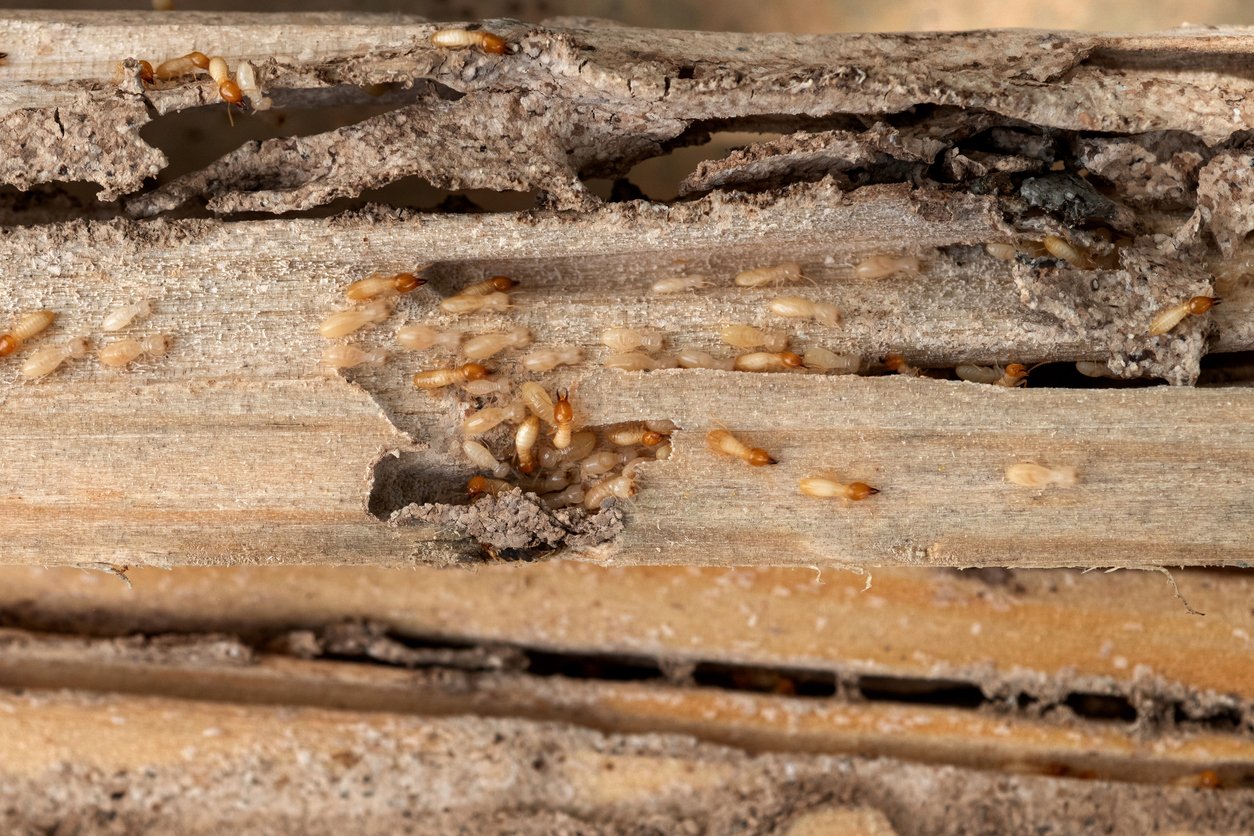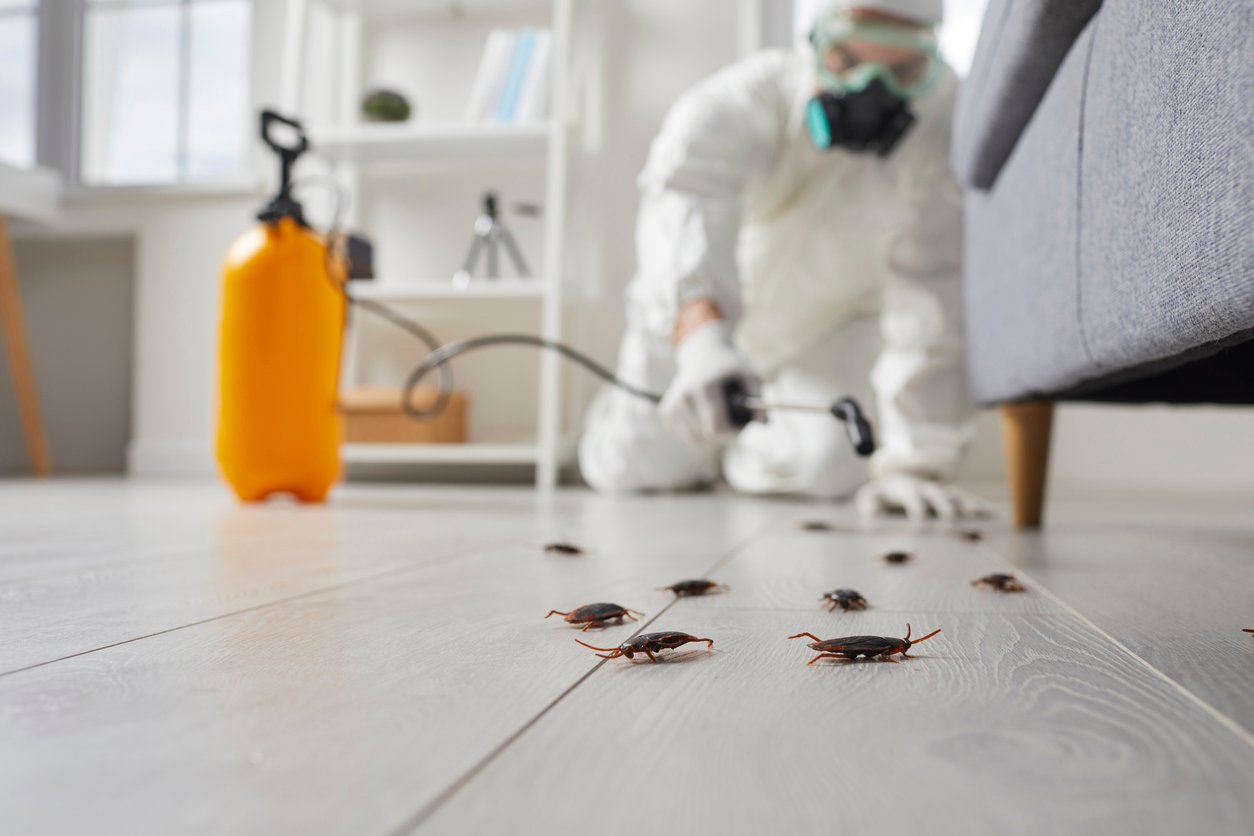Can You Get Termite Droppings From The Ceiling?

Termite droppings on your ceiling indicate an established termite colony within your property. These insects create tunnels and galleries in wooden structures, consuming cellulose-rich materials like wood, drywall, and insulation.
Ceiling damage could be a sign that termites have affected your home, which will require you to address the problem quickly. There is a real risk that the termites may have impacted structural support beams—without treatment, they could weaken these crucial parts of your home and create a dangerous hazard.

What are termites?
Termites (order Isoptera) are small insects. Subterranean termites feed on food and are common pests in homes. They get their name due to the fact they often build their nests underground. Workers are cream colored, while swarmers are dark brown or black and have wings.
Another kind of termite, the drywood termite, also makes its home in wood inside homes. However, drywood termites don’t need to have mud or moisture in the same way as subterranean termites, making them more likely to spread out around a house. They look similar to subterranean termites.
Termites usually grow to no longer than 4 mm. They are found all year-round, but you are more likely to see swarmers in summer or fall as they look for mates. Termites produce fecal matter in the form of pellets. These pellets are normally long with rounded ends, and they may also have ridges or pressed surfaces. Termite droppings look a little like coffee grounds.

How do you know if your home has termites?
There are several signs of termite activity you can look for in your home. Three of the main indications that you have a termite problem include:
- Seeing termite swarmers (alive or dead) indoors. You may also find shed wings without seeing the bodies. Don’t delay in contacting a professional pest control company if you find these signs of reproducing termites.
- Finding odd mud tubes running up the side of your home’s foundation. These mud tunnels are common with subterranean termites and are how they travel between the ground and wooden structures. Mud tubes are normally found on outdoor foundation blocks or inside crawl spaces.
- Discovering termite damage. For example, you might take down drywall to make a repair and find that one of the beams has been chewed and destroyed. Alternatively, you might see holes in your ceiling with odd coffee-ground-like debris around them.
Sometimes, you won’t see any obvious signs of termites. These pests are very good at hiding behind walls and getting into spaces where people aren’t usually looking. Having a yearly termite inspection is a good way to stay ahead of potential infestations.
TERMITES WITH WINGS? ACT QUICKLY.
If you’ve discovered termite swarmers, act quickly. It takes many years for termite colonies to grow to the point of creating swarmers, so if a termite colony is large enough to produce them, you may have a significant infestation on your hands.

Can termites live in the ceiling?
Both drywood and subterranean termites can cause damage to the ceilings in your home. Drywood termites have the potential to swarm into a home and may start their colonies in your attic or ceiling. Subterranean termites, on the other hand, require soil or mud to survive (moisture is key for them). They can get up into attics and ceilings, but it will take longer for them to make the tunnels they need to get there.
So the simple answer is, “Yes, termites can live in your ceiling.” If they do, you’ll need to figure out if there is a local or whole-structure infestation. This is not a scenario where a do-it-yourself treatment will work well or can even be advised, so make sure to reach out to experts to chat about the pest control options that would be best for you.

What to do if you find termite droppings
Termite droppings, which can look like small black dots, coffee grounds, or flecks of dirt, can be alarming to discover. Once you recognize what they are, though, there are steps you can take to make the process of getting rid of termites easier.
First, don’t move or get rid of the droppings. We know that’s counterintuitive because you’ll want to clean up your home, but if you can leave them where they are, your termite professional will be better able to see where the termites are coming from. Additionally, there’s a chance that the “droppings” won’t be droppings at all. If we can see where you discovered them, we can check to be sure they’re frass (termite feces).
After you discover droppings, the next step is to take a snapshot or photo. That way, if they are disturbed, you’ll be able to recall exactly where you discovered them the first time.
Next, look around the ceiling for small holes or damage. These could be additional signs of a termite infestation.
Finally, check windows and window frames for termite swarmers, wings, and droppings. If you start to find clues like these around your home, then the termite problem may be bigger than initially perceived.
With this investigative work complete, you’re ready to call in the experts.
Get expert support for termite infestations with Moxie Pest Control
Finding termites or termite droppings can be a shock, but we’re here to help. If you’ve found any kind of odd droppings or debris, give our experts a call at Moxie Pest Control. We’ll come inspect your property and let you know what we find. Even if you’re not sure what pest you’re dealing with, our pest professionals are trained in pest identification and can assist you in figuring out which pest has infiltrated your home. We have options for both eliminating active termite infestations as well as preventing new ones. Contact us to learn more!



